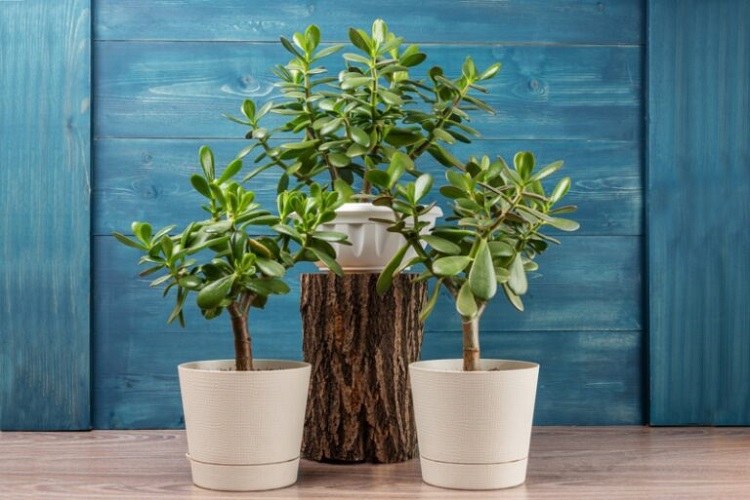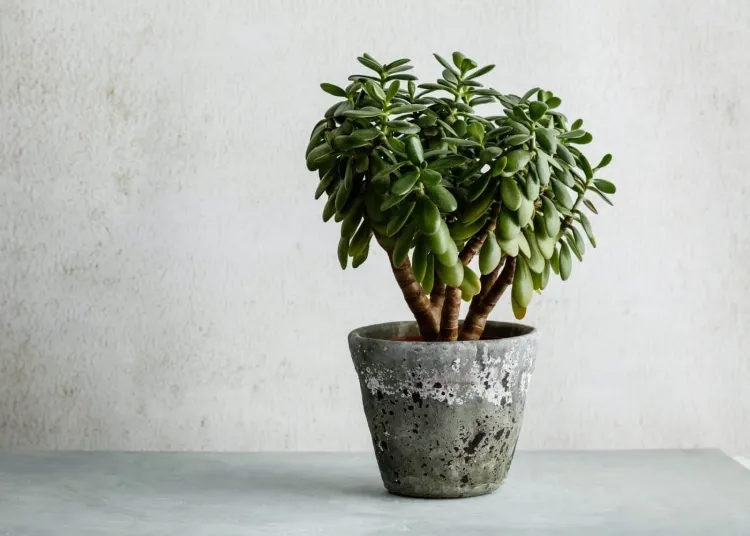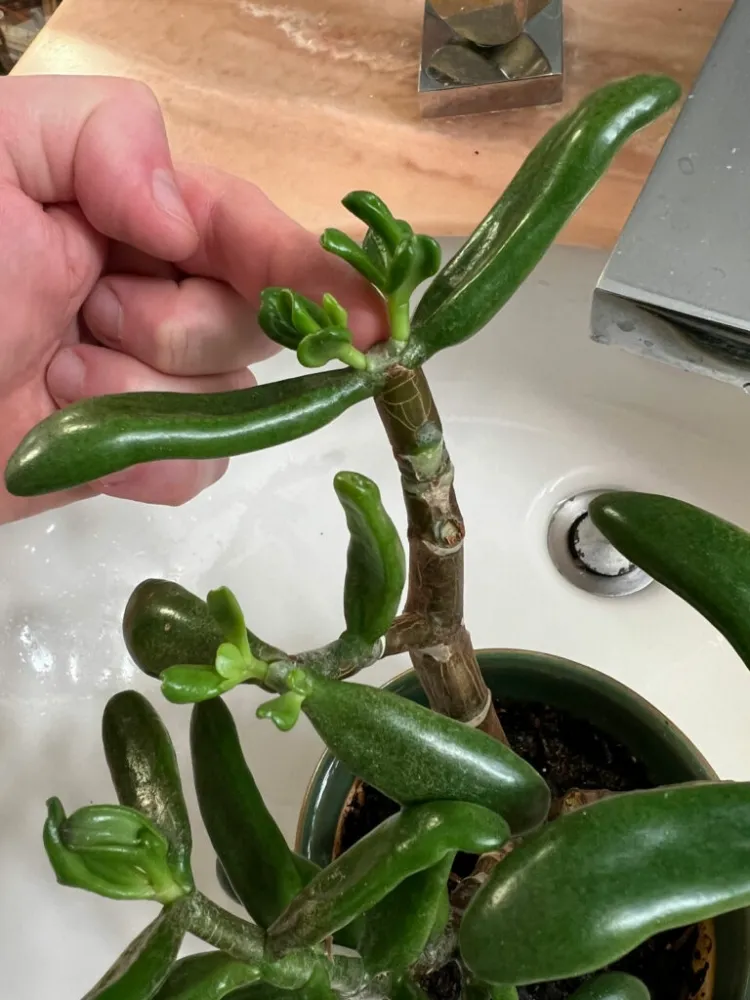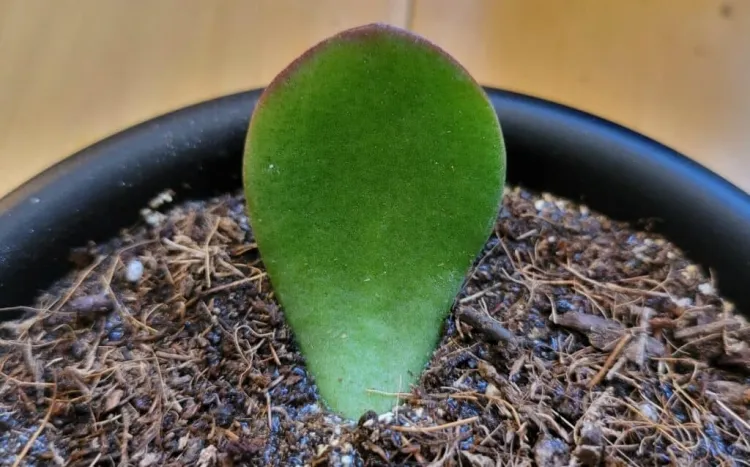The jade plant (Crassula ovata or C. argentea) is also known as the lucky plant, money plant or money tree. It is highly valued for its adaptability and attractive green leaves. With bonsai-like growth, it can grow in any room of your home and beautify your space for years with the right conditions and a little care. Many people ask – How do I care for my Jade plant? We shall explain how to care for this magnificent plant.
How to plant a Jade plant?
Plant the money tree in fast-draining soil, such as a potting mix for cacti or succulents. Ideally, the pH of the soil should be neutral to slightly acidic. If you end up using an all-purpose potting mix, add some perlite to it. Also, you can place the plant in a terracotta or clay container to help drain out extra moisture.
Where to place your Jade plant?
Choose a location on a south-facing window sill. Aim for at least four hours of direct sunlight per day to give your Jade plant the brightest light possible. To obtain the characteristic reddish tint of its paddle-shaped leaves, place in a brighter location.
If you plan to move your plant outside for the summer, allow it to acclimate gradually. Start in a shady spot, then slowly move it to sunnier areas until it is in full sun.
How do I know if my Jade plant needs water?
Allow the soil to dry out almost completely between waterings, but always water thoroughly. If your indoor plant is exposed in places with less light, it will need rare watering. During the summer months of full growth, keep the soil slightly moist.
However, if you notice yellow or drooping leaves, your plant probably needs water. Conversely, waterlogged soil or rotting roots are signs that you need to reduce irrigation.
When to repot a Jade plant?
As Jade plants are slow growing, there is no need to repot them regularly. Do it every two or three years on a routine basis, at any time of the year. Choose a pot that is no more than two sizes larger than the current container. The best option is a ceramic container with good drainage.
Which fertilizer to use for Crassula ovata?
Feed the jade plant with a timed release fertilizer early in the season or weekly with a weak liquid solution. Use a balanced 20-20-20 fertilizer at one quarter strength on mature plants and a fertilizer with less nitrogen on young plants.
How to make the Jade plant bloom?
Some specimens, especially those that are potted or mature, will show small white or pink flowers in winter. If yours is in a space where the lights stay on all night, moving it to a dark place in the fall can help flowering, which is triggered by the longer nights of winter.
When and how to prune your money tree?
The best time to prune Jade plants is spring or summer, but in general they can be pruned all year round. Warm season cutting simply allows for faster recovery in size than at any other time of the year because the plants are actively growing.
Use sharp shears or bonsai pruners to make the cuts. If you’re mainly looking to shape your plant, prune individual leaves or partial sections of branches. Cut just above the leaf node (where the leaf emerges from the branch). Avoid cutting the main branch (or trunk).
Why are the leaves of my Jade plant falling?
If your Jade tree frequently loses leaves, it may be a sign of insufficient light. So move it to a place where it gets bright, indirect light for at least six hours a day, and see if the problem improves. If most of the leaves that fall are old leaves, or if the fall is accompanied by leggy growth, your plant may be too hot and should be moved to a location with slightly cooler temperatures (but not cold).
How to grow the trunk of a Jade tree?
You can help the Jade plant develop a thicker trunk by pruning it. You can leave a few leaves, but cut off as much as you can. For example, up to the first pair of leaves of each branch. This way, the plant will be shorter and focus more on thickening its trunk. New stems and smaller leaves will also sprout, giving it a bushier look at the top. However, it will take at least a year, but usually longer, for the trunk to look like a tree. So be patient.
Also read: Which Plants Can Be Watered with Milk? Why? 5 Unexpected Indoor Species That Need More Calcium
How to take cuttings from a Jade plant?
Stem cuttings
Step 1: Use clean, sharp garden scissors to cut a thick stem (10-15cm long) with healthy leaves. Remove the lower leaves, then place the cutting in a sunny location for a few days until the cut end forms a lighter colored, firm callus.
Step 2: Fill a small pot with succulent soil and make a long, thin hole in the center. To accelerate root growth, apply rooting hormone (powder or liquid) to the lower inch of the calloused stem. Carefully place the stem in the pot, then pat the soil down until the cutting stands upright on its own.
Step 3: Keep the cutting out of direct sunlight for three to four weeks. As soon as new growth appears, gradually move it closer to a sunny window. Water sparingly during this time.
Leaf cuttings
Step 1: Using a clean, sharp blade, pick up a large, healthy leaf.
Step 2: Place the leaf on dry succulent soil, out of direct sunlight, until the roots begin to grow. Rooting hormone can be applied to the cut end of the leaf, and a mixture of equal parts succulent soil and perlite or vermiculite can lighten the texture of the soil to encourage growth.
Step 3: Wait for small roots to sprout from the cut end of the leaf, which may take several weeks. Place the leaf in a small pot of fast-draining soil mix, such as a mix of perlite and sand. New shoots will appear, and the original leaf will shrivel up completely as the roots become established.
Common Jade Plant Problems
Jade plants are relatively easy to care for, but there are a few common issues you may encounter. When growing them, watch for signs that indicate it needs extra care:
Root rot
Because plants store water in their fleshy leaves, it’s important to avoid overwatering or having poorly drained soil, which can cause root rot. Falling leaves, dark or limp stems or leaves, and brown, mushy roots are the signs.
Mealybugs
Watch out for mealybugs, which can infest your Jade plant with a white cotton-like substance. Treat the pests by dabbing the entire plant with a cotton swab dipped in rubbing alcohol, then rinsing the leaves and stems with water or insecticidal soap.
Also read: Is It Possible To Make a Jade Tree Bloom at Home? What to do?





